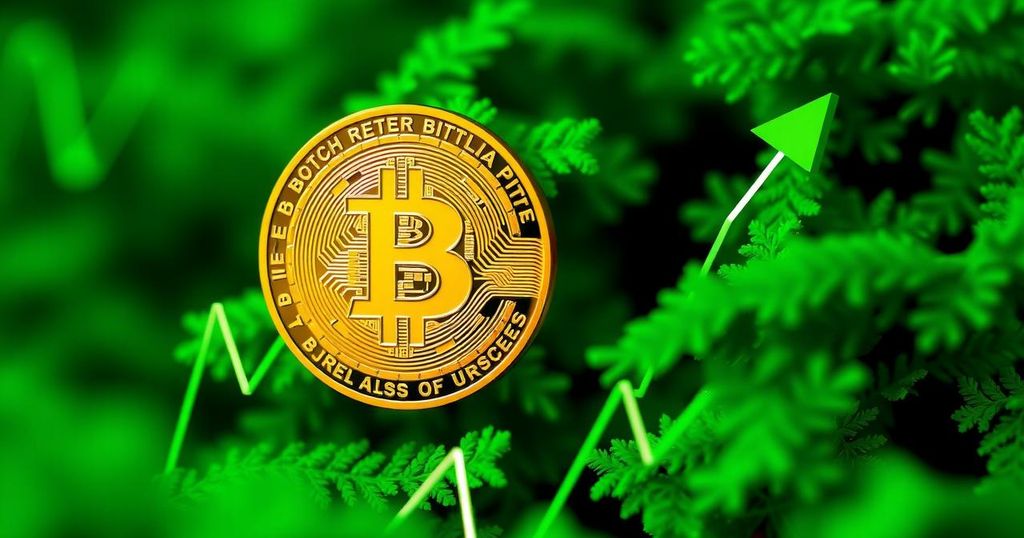Bitcoin Climbs as Fed Maintains Interest Rates Amid Economic Uncertainty
Bitcoin price jumped by 2% after the Federal Reserve decided to keep interest rates unchanged. The Fed’s current interest rate sits at 4.25% to 4.5%, amid economic uncertainty tied to President Trump’s tariffs. Despite the tariffs impacting consumer outlook, the U.S. labour market remains stable, and inflation is edging closer to targets. Both U.S. and Chinese economic actions indicate a tense but potentially easing situation as meetings for trade negotiations continue.
Bitcoin, the world’s leading cryptocurrency, saw a quick boost of about 2% when the Federal Reserve decided to keep interest rates unchanged. As it stands, Bitcoin is now around $96,000, reflecting a 1.5% uptick during the hour post-announcement. Over the past month, Bitcoin has surged about 22%, according to tracking service CoinGecko.
The Federal Reserve held steady on Wednesday with its rates, suggesting that there’s still uncertainty around the economic front, especially with President Trump’s tariffs hanging like a cloud over the economy. The interest rates remain in the range of 4.25% to 4.5%, marking what is now the fourth consecutive meeting where no change was made. This decision was widely anticipated amid Trump’s ongoing calls for rate cuts.
In a statement, the Fed highlighted increasing levels of economic uncertainty and maintained a data-dependent approach for any future adjustments to the rates. They noted potential risks of rising unemployment and inflation, signaling that they are closely monitoring the situation. The Fed pointed out that while recent fluctuations in net exports have caused some data noise, economic activity is still expanding.
Experts say the Fed is in a tight spot with Trump’s tariffs potentially pushing domestic inflation higher. If rates stay elevated to counteract tariff pressures, they risk slowing down the economy even more, affecting consumption, which could eventually lead to an uptick in unemployment figures. Despite the negative effects of tariffs on consumer sentiment, the labour market in the U.S. appears to be holding strong, with 177,000 jobs added recently, keeping the unemployment rate stable at 4.2%.
Inflation has also been stabilising, creeping closer to the Fed’s target of 2%. Recent data demonstrated that a core measure of the Personal Consumption Expenditures Price Index (PCE) recorded a 2.6% increase over the past year, a slowdown from the 3% peak seen in February.
Traders now see around a 28% likelihood that rates will be cut during the June meeting, according to CME FedWatch. Trump’s tariffs, particularly the hefty 145% levies on Chinese imports, have stirred significant anxiousness among investors. On the brighter side, U.S. Treasury Secretary Scott Bessent is meeting with Chinese officials this week in Switzerland, hinting at potential discussions for easing tensions.
The People’s Bank of China is also taking action to counter the economic impacts from the tariffs, reducing reserve requirements for banks by 50 basis points and cutting its policy interest rate by 0.10 basis points, along with other measures aimed at stimulating specific sectors. Investors have shown relief following Trump’s announcement last month of a 90-day postponement on numerous tariffs, but as the July 8 deadline approaches, all eyes are on whether actual deals materialise from these ongoing negotiations.




Post Comment